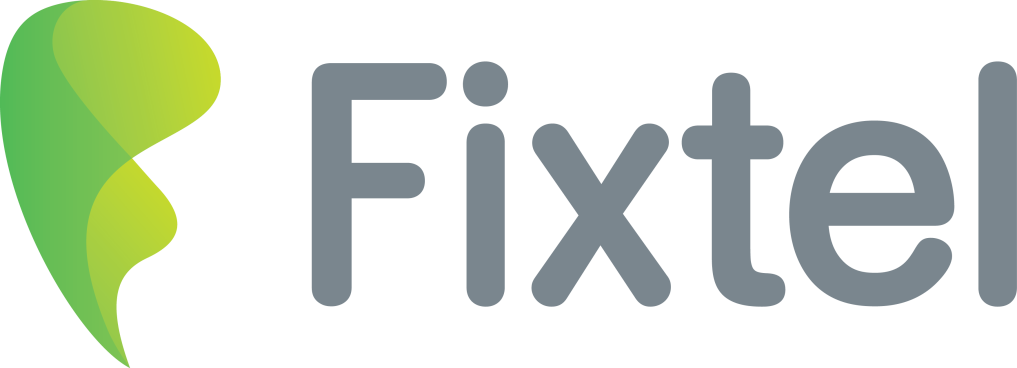Cloud security threats have escalated dramatically, with businesses reporting a major increase in cyberattacks since 2021.Google Cloud Security has released their H1 2025 Threat Horizons report and have highlighted the threat to attacks on businesses cloud databases. As organisations continue migrating critical communications to cloud platforms, protecting sensitive data should be a leading concern for business leaders. Avaya Cloud Office offers robust security solutions, but understanding how these protections work and how to implement them effectively remains challenging for many businesses.
Today’s business environment demands more than basic security measures. Data breaches can cost companies millions in damages and lost revenue, while compliance violations bring hefty regulatory penalties. Furthermore, service disruptions can halt operations entirely. This guide examines why Avaya cloud security matters for forward-thinking business leaders and provides practical strategies to strengthen your protection measures for 2025 and beyond.
What is Avaya Cloud Security and Why It Matters
In the rapidly evolving digital era, securing cloud environments has become a critical business imperative rather than just an IT concern. With 82% of all data breaches involving cloud-stored data, understanding cloud security fundamentals forms the cornerstone of any robust protection strategy.
Understanding Cloud Security Basics
Cloud security encompasses the technologies, policies, controls, and services designed to protect cloud data, applications, and infrastructure from threats. At its core, cloud security confronts a fundamentally different security reality because public cloud environments lack clear perimeters, creating an expanded attack surface.
The concept revolves around several fundamental principles:
- Identity and Access Management (IAM): Controlling who can access cloud resources and what they can do with those permissions
- Data Protection: Implementing encryption for data both in transit and at rest
- Compliance Management: Ensuring adherence to relevant regulatory frameworks
- Threat Detection: Continuous monitoring and response to potential security incidents
- Business Continuity: Planning for disaster recovery and maintaining service availability
Avaya’s approach to cloud security specifically employs vault technology to maintain trust and ensure security integrity. This includes robust secrets management (tokens, passwords, certificates, and API keys), key management, and certificate management. Strong encryption is achieved through 2048-bit public/private key pairs, creating unreadable records that can be stored safely.
The fundamental security model for cloud environments follows what industry experts call the “shared responsibility model”. This means cloud providers handle infrastructure security, accordingly customers remain responsible for securing their data, applications, and access controls. Understanding this division of responsibilities is essential for implementing effective cloud security measures.
Why Businesses Must Prioritise Cloud Protection
The consequences of inadequate cloud security can be devastating for businesses. Indeed, nearly half (44%) of organisations have experienced a cloud data breach, with 14% reporting an incident in just the past 12 months. Moreover, the financial implications are staggering—data breaches cost companies an average of 6 million.
What makes this particularly alarming is that 39% of these breaches affect data spread across multiple cloud environments, making them harder to control and secure. The threat landscape is rapidly expanding, evidenced by a 75% surge in cloud environment intrusions from 2022 to 2023 alone.
For businesses using Avaya Cloud Office, prioritising cloud security delivers several concrete benefits. The platform ensures enterprise-grade capabilities through multiple, globally distributed data centres, enterprise single sign-on, and flexible role-based permissions for administrators. These features ensure critical business communications remain secure and available when needed.
Beyond direct breach costs, businesses must consider the broader implications of cloud security failures. Regulatory non-compliance can trigger severe penalties. Additionally, reputational damage often proves even more costly in the long term, potentially eroding customer trust permanently.
Cloud security becomes increasingly complex as organisations adopt hybrid and multi-cloud environments. According to security experts, two-thirds of organisations now use 25 or more SaaS applications, yet only 10% have encrypted 80% of their data. This application sprawl significantly expands the attack surface.
For business leaders, evaluating cloud security is not merely a technical exercise but a strategic business decision. When implemented correctly, Avaya Cloud Office’s security framework protects against the triple threat of data breaches, compliance violations, and service disruptions.
Consequently, businesses that prioritise cloud security gain not just protection, but also competitive advantage through maintained customer trust, operational resilience, and regulatory compliance. As cloud environments become increasingly integral to business operations, robust security measures transition from optional to essential.
Common Security Risks in Cloud Communication

Businesses face significant security challenges as communication increasingly shifts to cloud platforms. According to research, 53% of organisations identify unauthorised access through misuse of employee credentials and improper access controls as the single biggest threat to cloud security. Understanding these risks is essential for implementing effective protections.
Data Breaches and Unauthorised Access
Unauthorised access poses serious threats to businesses, compromising sensitive information and disrupting operations. Nearly half (44%) of organisations have experienced a cloud data breach, with 14% reporting an incident in just the past year. These breaches often result from cybercriminals leveraging vulnerabilities through advanced phishing attacks and API security breaches.
Cybercriminals employ several methods to gain unauthorised access:
- Brute force attacks: Using automated tools to try numerous username and password combinations
- Phishing: Tricking individuals into revealing login details through deceptive emails or websites
- Social engineering: Manipulating individuals using psychological tactics to gain access
The ramifications extend beyond simple data theft. Unauthorised access can lead to operational disruption, financial losses, and significant reputational damage. Notably, two-thirds of organisations send sensitive data to more than 1,000 different third parties, creating substantial tracking challenges.
Service Disruptions and Downtime Threats
Cloud outages can halt critical business operations, preventing access to essential applications and data. According to industry research, the median annual downtime from high-impact outages is 77 hours, with hourly costs reaching up to 2 million in lost revenue and productivity.
Network failures, third-party or cloud provider service failures, and human error are the primary causes of unplanned outages. For instance, the widely publicised CrowdStrike update fault in 2024 crashed millions of Microsoft Windows machines worldwide, demonstrating how a single technical issue can have far-reaching consequences.
Power disruptions represent another prevalent cause of outages. Data centres operate at enormous scale, consuming tens to hundreds of megawatts of electricity. Limited power scalability can leave cloud infrastructure vulnerable to sudden disruptions. Moreover, Distributed Denial of Service (DDoS) attacks overwhelm cloud services with malicious traffic, rendering them inaccessible to legitimate users.
The impact of these disruptions extends beyond temporary inconvenience. Engineers typically devote 30% of their time—approximately 12 hours of every 40-hour work week—addressing service interruptions. This represents a significant productivity drain. Furthermore, one-third of businesses report losing between $150,000 and more than 1.5 million from outages.
Essentially, cloud communication systems are only as strong as their weakest link. For business leaders, understanding these interconnected risks is the first step toward implementing effective protection measures.
How Avaya Cloud Office Protects Your Business
Avaya Cloud Office delivers robust protection for your business communications with multiple security layers designed to safeguard sensitive information. The platform employs a comprehensive approach to security that extends from application design to infrastructure management, ensuring your communications remain protected against modern threats.
Avaya Cloud Office uses powerful encryption to protect your business communications both in transit and at rest. For voice calls, the platform implements two enterprise-grade security protocols—Transport Layer Security (TLS) for authentication and Secure Real-Time Transport Protocol (SRTP) for encryption. This dual-protocol approach prevents eavesdropping and tampering with audio streams between all endpoints, including desk phones, computers, and mobile devices.
The encryption standards used by Avaya are impressive in their strength:
- AES-128 (128-bit keys) for high security
- AES-256 (256-bit keys) for maximum security
- TLS 1.2+ for all web-session traffic
For enhanced protection, Avaya Cloud Office employs vault technology that maintains trust and ensures security integrity. This approach uses 2048-bit public/private key pairs to create unreadable records that can be safely stored.
Best Practices for Strengthening Your Cloud Security

Implementing strong cloud security requires more than just technological solutions. Human error accounts for 90% of security breaches, making a systematic approach to security essential. Here are key practices businesses should implement to strengthen their cloud security posture.
Employee Training and Awareness
Comprehensive training programs represent a critical foundation for cloud security. Regular education on best practices helps staff recognise and respond to potential threats, thereby reducing human error that could lead to security breaches. First thing to remember, all employees—not just IT staff—should undergo periodic cybersecurity awareness training.
Effective training should include:
- Recognition of phishing attacks and social engineering tactics
- Password hygiene and secure access procedures
- Data protection protocols and compliance requirements
- Response procedures for suspected security incidents
Regular Security Audits and Updates
In light of evolving threats, organisations must conduct regular security assessments. Both internal and external audits are essential for verifying compliance with security standards and regulatory requirements. These audits systematically evaluate cloud infrastructure and security practices, helping to identify and address vulnerabilities before they can be exploited.
Security audits should examine access control management, verify that logging is enabled for all critical cloud services, and ensure that sensitive data is properly encrypted both at rest and in transit. Above all, audit findings should be addressed promptly with documented changes.
Choosing the Right Security Configurations
Proper configuration remains fundamental to cloud security. Misconfigurations are among the top threats to cloud computing environments. Coupled with strong authentication, organisations should implement appropriate security guardrails that prevent common configuration errors.
Effective security configurations include implementing least privilege principles, ensuring encryption of sensitive data, and establishing clear guidelines for data sharing through shared drives and folders. As a matter of fact, regularly updating these configurations whenever new services are introduced helps maintain continuous protection.
By implementing these practices, businesses can significantly enhance their cloud security posture, protecting sensitive communications and data from increasingly sophisticated threats.
Evaluating Your Cloud Security Strategy for 2025

Effective cloud security requires regular strategic evaluation, especially as 61% of organisations experienced a cloud security incident in the past year, with 21% resulting in unauthorised access to sensitive data. Forward-thinking business leaders must look beyond current protections to ensure their security posture remains robust for tomorrow’s challenges.
To properly evaluate your cloud security strategy, consider these critical questions:
- “How can we demonstrate the value of our cloud security efforts to business executives and show the return on investment (ROI) of our security strategy?”
- “How can we ensure our cloud security standards are met and that we possess the necessary skills to handle cloud security effectively?”
- “What security certifications and standards do your cloud providers adhere to?”
- “How do you handle data encryption in transit and at rest?”
- “Can you describe your incident response plan and how often you conduct vulnerability assessments?”
By asking these questions, you’ll gain clarity on your security posture and identify potential gaps. Subsequently, you can develop remediation plans that address these vulnerabilities before they become serious problems.
Aligning Security with Business Growth
Cloud security is not merely a technical concern but directly impacts business outcomes. Therefore, effective alignment begins with a candid conversation: “We need to ensure that our cloud security strategy is consistent with our business objectives. How can we guarantee that our security measures support customer satisfaction and our financial goals?”
Correspondingly, this alignment requires understanding trade-offs between different cloud models. If your business handles sensitive data with strict regulatory compliance needs, enhanced control offered by private cloud solutions might be appropriate. Otherwise, when innovation and scalability are priorities, different configurations may better serve your objectives.
In essence, mapping your cloud security architecture to your organisation’s overarching cloud strategy ensures that security measures aren’t afterthoughts but integral components of business objectives. This approach not only protects your assets but maintains customer trust and ensures compliance with increasingly stringent regulations.
Conclusion
Cloud security stands as a critical business imperative rather than merely an IT concern. Throughout this guide, we have explored why Avaya cloud security matters for forward-thinking leaders preparing for 2025 and beyond. The statistics speak volumes—with data breaches costing companies an average of 6 million and cloud intrusions surging 75% from 2022 to 2023, the stakes have never been higher.
Certainly, Avaya Cloud Office addresses these challenges through multiple security layers. The robust end-to-end encryption, compliance frameworks, and disaster recovery capabilities provide businesses with essential protections against modern threats. Nevertheless, technology alone cannot guarantee security. Human elements remain equally crucial, especially since 90% of security breaches stem from human error.
Business leaders must therefore adopt a comprehensive approach to cloud security. This includes regular employee training, systematic security audits, and proper configuration management. Additionally, asking tough questions about your current security posture helps identify potential vulnerabilities before they become serious problems.
The landscape of cloud security threats continues to evolve rapidly. Consequently, your security strategy must adapt accordingly, aligning with broader business objectives rather than existing separately. While threats may change, the fundamentals remain consistent—protect sensitive data, maintain regulatory compliance, and ensure business continuity.
Ultimately, strong cloud security does more than prevent breaches. It builds customer trust, supports operational resilience, and provides competitive advantage. Though the challenges are significant, businesses that prioritise cloud security position themselves for sustainable growth in an increasingly digital future.


